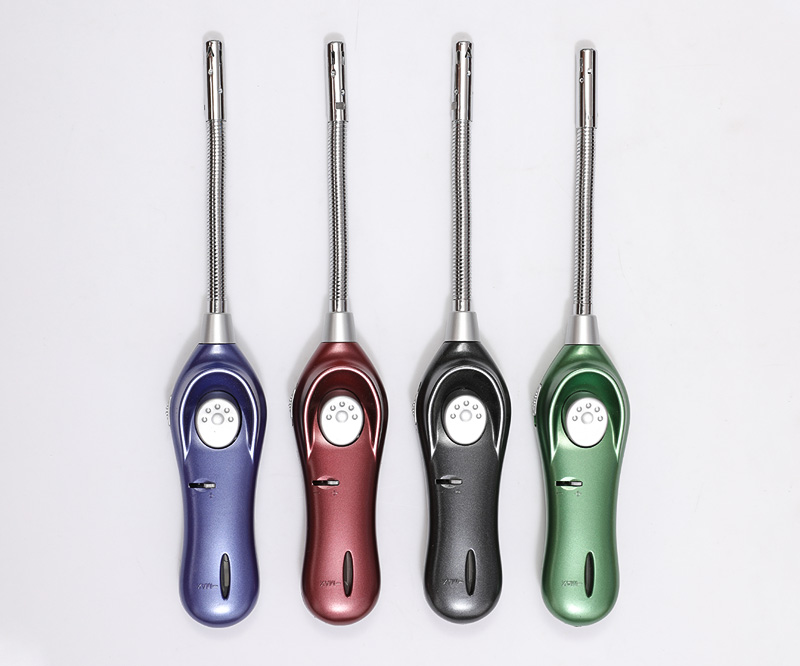Summary:The main component of lighter gas is butaneButane (CH3CH2CH2CH3), also known as n-butane, is a gener...
The main component of lighter gas is butane
Butane (CH3CH2CH2CH3), also known as n-butane, is a general term for two alkane hydrocarbons with the same molecular formula (C4H10). Includes: n-butane and isobutane (2-methylpropane). Butane is a flammable, colorless, easily liquefied gas. It is an important raw material for the development of petrochemical and organic raw materials, and its use has been paid more and more attention.
Properties: Colorless flammable gas. Melting point-----135.35C, boiling point-----0.5C, liquid density 0.5788g/cm3, refractive index 1.3326 (20.C), critical temperature-----152.0l. C, critical pressure 38OkPa, critical volume 4387ml/g. Insoluble in water, soluble in alcohol, ether, chloroform and other hydrocarbons. It forms an explosive mixture with air, and the explosion limit is 19%~84% (even).
Production process: This product exists in oil field gas, wet natural gas and cracked gas, such as in petrochemical light oil cracking to ethylene plant, the co-produced carbon tetrahydrocarbon is about 40% of ethylene output; The carbon tetrahydrocarbons produced account for about 6% of the treatment capacity of the device, and butane can be obtained by separation.
1. After separating oil field gas and wet natural gas, pressurizing, condensing and separating, liquefied petroleum gas containing propane and butane can be obtained, and then propane and butane can be obtained by distillation separation.
2. Separation from the C-4 fraction of petroleum cracking For example, the medium-depth cracking product of naphtha contains about 65% of butane, and the butane content of the heavy-distillate cracking product is lower. In recent years, some refinery catalytic units have switched to molecular sieve catalysts and hydrocracking processes, resulting in an increase in butane yield and a decrease in butene yield in refinery gas. Its butane separation process is as follows. The tail gas from the catalytic cracking unit, after fractionation, separation of C3, isobutene and C5 fractions, enters the front-end distillation column from the bottom of the column, and more than 90% of butane is obtained from the top of the self-extractive distillation column.
Uses: In addition to being directly used as fuel and refrigerant, this product is widely used to prepare various organic synthesis raw materials, such as dehydrogenation to produce butene and butadiene; isomerization to produce isobutane; Catalytic oxidation can produce maleic anhydride, acetic acid, etc.; halogenation can produce halobutane; nitration can produce nitrobutane; catalysis at high temperature can produce carbon disulfide; In addition, butane can be used as a motor fuel blend to control volatiles; it can also be used as a deasphalting agent for heavy oil refining; a solvent for wax precipitation in oil wells; an overflow agent for secondary oil recovery; Refrigerant for fresh water, and solvent for Ziegler polymerization of olefins, etc.
Chemical Reactions and Uses: Alkanes are inert gases because their C-C and C-H bonds are very strong. They do not react with acids, bases, metals or oxidants. Surprisingly, they do not react with acids and bases. But gasoline (octane) does not react with concentrated sulfuric acid, alkali metals or potassium permanganate. it burns to form carbon dioxide and water vapor
Butane + Oxygen - Carbon Dioxide + Water Vapor
2C4H10+9O2--8CO2(g)+10H2O
Carbon dioxide and water vapour are produced when butane is burned if there is an adequate supply of air. If the air supply is insufficient, carbon and carbon monoxide are produced. Daily uses of butane include domestic LPG, and it is also used as fuel in lighters and portable butane gas stoves.
Concern has been raised due to the depletion of the ozone layer caused by Freons and CFCs. Therefore, refrigeration systems, especially household refrigerators and refrigerators, have increased the use of isobutane (2-methylpropane) as a refrigerant instead of Freon. In addition, isobutane is also added to the spray in place of chlorofluorocarbons.
 METAL HOME HOSE IGNITOR OQ-9002W
METAL HOME HOSE IGNITOR OQ-9002W 
